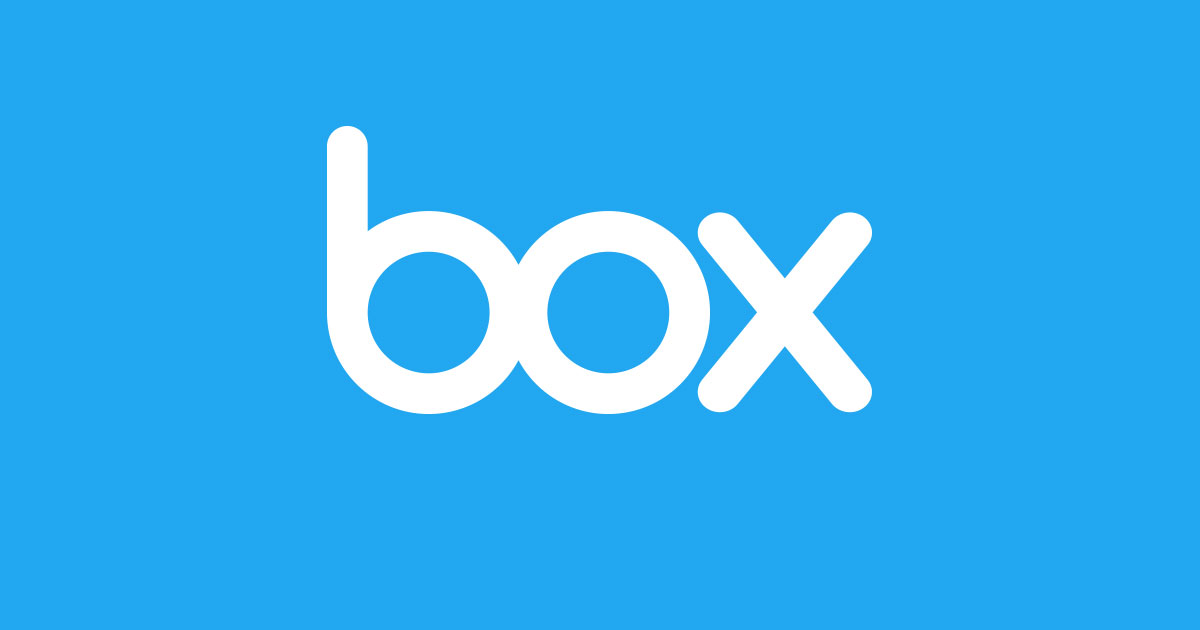Box: Insurance isn’t just about premium rates, it’s about the entire user experience process
Traditionally, the insurance sector has focused almost solely on providing the best rates for customers. Everything else – particularly the technology underpinning customer experience – has found itself a lot further down on the priority list.
Whilst competitive rates will remain top-of-mind for insurance companies as long as they operate, the advent of digital services – sped up by COVID-19 – is pushing customers to expect consistent experiences across various sectors. Be that the Big Tech apps, or insurance providers’ platforms.
“It’s not just about the rates, it’s actually about the entire experience that a customer goes through,” Vaneet Grewal, Box’s financial services managing director, tells FinTech Futures.

“CEOs are actually starting to turn their minds more towards driving that high-end customer experience”
“Right from trying to become a customer of an insurance carrier, through to managing your policy with that carrier, through to – in the event of a need to claim – a frictionless claim process.”
Put simply, Box is the content cloud which provides insurance carriers and agencies, as well as other financial services firms, with one secure platform to manage all their content in the cloud.
Box is part of a larger wave in digitally enabled firms disrupting the traditional models of insurance. In 2020, insurtech funding reached an all-time high of $7.1 billion, according CB Insights.
“Insurance always gets this bad reputation of being a slow industry sector,” says Grewal, who is determined to help firms defy this.
“The triangulation effect”
Looking at the property and casualty insurance sector, Grewal highlights some of the challenges firms face today.
He says “the big two” are rising settlement rate costs, and the need to accelerate transformational projects.
“Costs around settlement are increasing, be it because of natural disasters, or inflation costs. And that’s a tough thing for an insurance carrier to manage when trying to offer lower premiums. At a macro level, that’s always going to be the age-old challenge.”
But drilling down further, Grewal says the second challenge is how firms “can really accelerate their transformational activities”. It sees three priorities – driving down operational costs, innovating in the customer experience space, and keeping premiums at a competitive price point for customers – collide.
“That’s a triangulation effect. When you yank on one corner of that triangle, the other two often suffer.”
Unlike other sectors, where laws remain constant, legislation is constantly changing for insurance firms. Which is another big challenge. These changes often take up huge amounts of concentration and manpower, which means other activities tend to get put on the wayside. Be that investing in the customer experience or driving down operational costs.
Big Techs driving up customer expectations
But priorities in insurance firms are changing. “CEOs are actually starting to turn their minds more towards driving that high-end customer experience,” says Grewal.
He argues this is because “customers feel empowered and comfortable with managing their policies as much as they can, from a self-service standpoint”. Whether it be to control payments, statements, delivery options, or carrier coverage updates.
In part, this is because “what an average consumer experiences in their day to day” is rapidly changing – and already has.
“If you’re a customer of Amazon, or you’re a user of Uber, or you use DoorDash, the bar has already been raised for customer experience.
“That bar is what every customer is measuring every one of the goods and services that they use in their everyday life, insurance being a huge part of that.”
And Big Techs are only continuing to grow. Between November 2020 and January 2021, Apple and Amazon both raked in sales of $100 billion. This means expectations held by consumers of insurance firms will only continue to evolve.
COVID-19 insurance trends
The insurance sector has experienced a flurry of new trends in light of the COVID-19 health crisis. One is the heightened consciousness of insurance as a concept among younger generations, which is also driving up demand for certain products.
“There’s more recognition that life insurance isn’t something that you just need to buy when you’re old,” explains Grewal. “There’s a lot more awareness amongst millennial groups around the need to insure their life from a death benefit standpoint, as well as from a legacy and potential investment standpoint.”
Another is law changes. In the US, modifications to the Appropriations Act, has “actually driven up demand as well”, says Grewal. Section 7702 made Life Insurance subject to lower interest rates, which – given the increased awareness of these products – allows carriers to offer a better product set to new insurance prospects.

“That whole model has been completely disrupted. It’s no longer viable to have that local office model.”
And zooming out, Grewal highlights how the sector has been disrupted by pandemic-induced lockdowns and shuttering of businesses’ physical shopfronts.
“In the US, there’s a huge concept around the notion of a local office or agency which sits within your town and acts as a front-face for the insurance company,” he explains.
“That whole model has been completely disrupted. It’s no longer viable to have that local office model.”
Grewal says the answer lay – and still does lie – in omni-channel experiences. Those firms which invested in alternative, digital shopfronts early were the ones which managed to divert customer traffic in the least friction-filled way.
But it’s not just a question of upping investments in digital. It’s also a simple question of trust.
“Customers have become really aware and sensitive to security, particularly around their content,” says Grewal. This can include anything from their financial, to policy, to billing, and identity documents.
“Because the customers are no longer dealing with a physical relationship, it seems to them that their data is being sent off into the ether. Which creates a trust mismatch in the insurance consumer market.”
Content is “the crown jewels”
Designed with content at its centre, Box is the content cloud. It enables you to securely manage the entire content journey, from the moment a file is ingested or created, to when it’s shared, edited, published, approved, signed, classified, and retained.
In the insurance space, there’s an array of content relevant to each insurance product and claim. Policy wording and billing statements being some of the main ones.
“Content is the crown jewels of what an insurance carrier holds on behalf of a customer,” explains Grewal. “It’s their IP about the customer.”
This sees Box well-positioned to manage insurance firms’ content and take it through the entire content lifecycle. Including collaborative stages, such as e-signatures, post-lifecycle governance, and technical stages – such as looking for malware inside documents.
As well as the classification stage of documents, including metadata fields. And beyond this lifecycle, insurance firms can use application programme interfaces (APIs) and software development kits (SDKs) to extend the power of Box, tailoring it to a white labelled experience.
“If you put a piece of content in the middle and surround it by all of those key lifecycle steps, you can see where Box becomes really compelling because we’re involved in every one of those core steps.”
Regulation built in
Box was built with a regulated market like the financial sector in mind. Which means security profiles are not bolted on afterwards. Rather, they’re actually ingrained in the experience.
Designed for cloud content management, Box’s cloud-native approach to security and compliance means content is both readily available and safely stored away.
With easy-to-use integrations and workflow automations, users can utilise the platform to fuel real-time collaboration.
From 150 GB media files, to personal identifiable information (PII) – and everything in between – Box’s priority is to keep content simultaneously secure and always available to keep innovation flowing.
This also means content doesn’t need to be moved unnecessarily. Often content which doesn’t need to be moved is transferred between places anyway. Either because it’s not being made available, or accessible, in an appropriate way.
US insurer Allstate, one of Box’s customers, allows people to take pictures via their Allstate mobile app and store them on an in-app inventory. The app then uses Box as a content layer to classify the pictures.
Cloud enabled vs cloud-native
When it comes to the cloud, Grewal acknowledges “the perception that insurance is a laggard”.
“If you look at the largest insurers in the UK, and in continental Europe, and North America, these organisations have – over years and years of mergers, acquisitions, and divestitures – inherited a tonne of on-premise, legacy IT solutions.”
Much like other incumbents in the wider financial services industry, insurers tend to operate their services via what Grewal calls “a smorgasbord of IT systems”.

Box was built with a regulated market like the financial sector in mind
“There’s too many core systems, they’re dated, and the ability to make changes to them is just insurmountable and often not worth the hassle. Firms have historically lived with some of the pain and remained on-premise, incurring the high costs associated with that.”
One route insurance firms have pursued to rectify this is to make their existing systems cloud-enabled. Despite the fact said systems aren’t fundamentally cloud native.
Grewal highlights a different route. “We are the content cloud. If you start gluing all of those cloud offerings together, you actually get a cloud-native digital insurance core, which is my theory behind how insurance organisations can actually make a substantial step into cloud adoption.”
The term “digital transformation” has been exhaustively used over the years. But 80% of them haven’t been fully realised in the last ten years, according to 2020 Harvard Business Review data.
“That term has been used and abused so much,” says Grewal. “The only way insurance firms are going to make substantial shifts is if they move to cloud native solutions in the content space, in the data space, in the sales and marketing space, as well as in the claims underwriting and policy administration solution space.”
Box holds one of the keys to unlocking this digital ecosystem. A solution which has the potential to completely overhaul the cumbersome processes of old which have long held insurance firms back from competing with other tech-enabled players.
And the digital urgency sprung on insurance firms by COVID-19 means firms are now, more than ever before, seriously considering the returns on investment from being a part of such an ecosystem.
For more, visit www.box.com












































